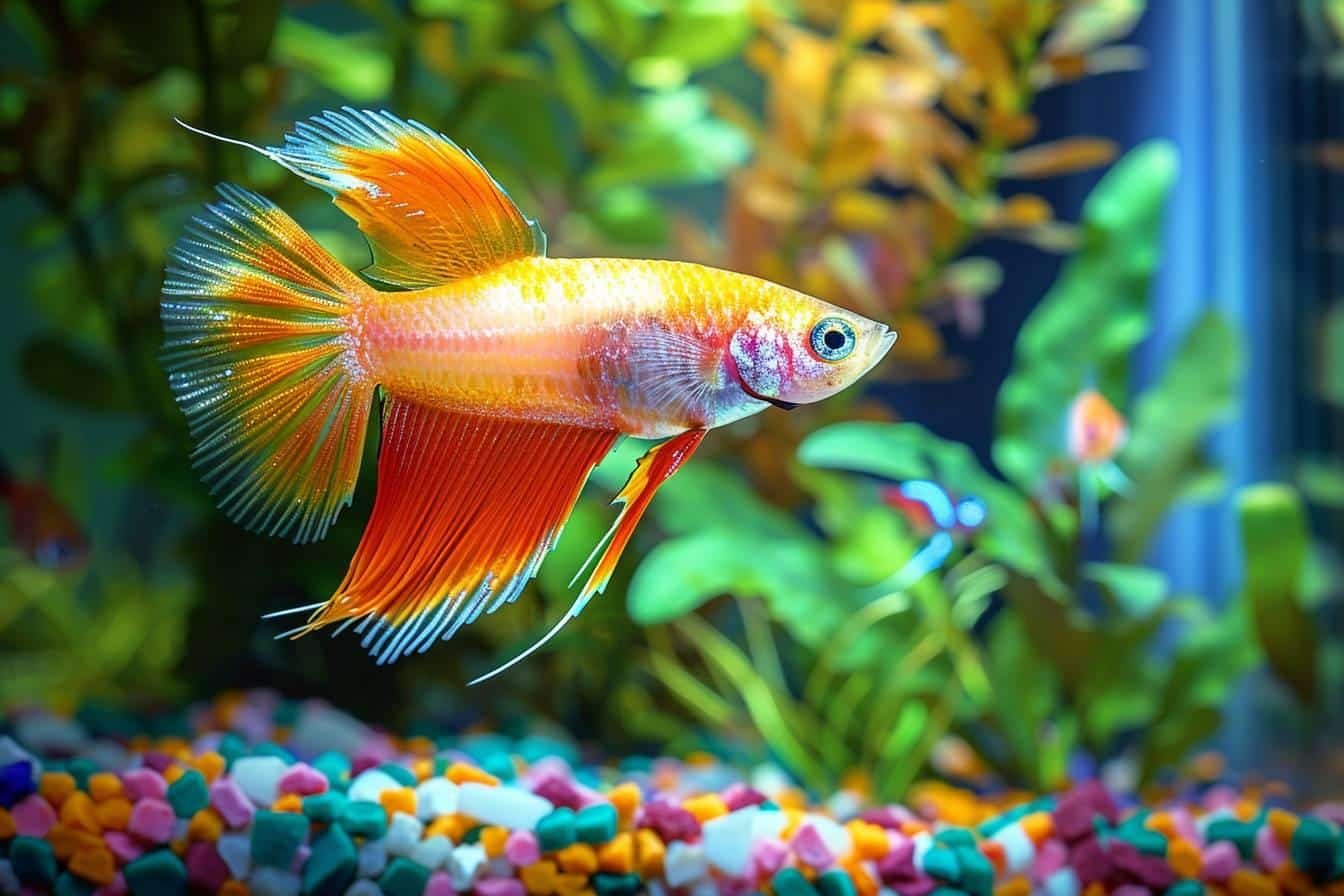Molly fish are interesting and colourful creatures that bring life and dynamism to any aquarium. Differentiating a male molly from a female may seem complicated at first, but with a few tricks, it becomes child's play. Let's find out how to identify the gender of these charming tropical fish.
Molly male or female: how to recognise them?
To examine molly fish in detail, the first thing to look at is their anal fin. The male has a hook-shaped anal fin called a gonopod, while the female has a triangular-shaped anal fin.
Physical differences
The physical differences don't stop there. Males are generally smaller and more colourful than females. and have more pointed fins. Females, on the other hand, are larger, more robust and have rounded fins. Here is a table summarising their characteristics:
| Features | Male | Female |
|---|---|---|
| Anal fin | Gonopod, pointed | Triangular |
| Size | Smaller | Larger |
| Colour | More lively | Duller, in gestation |
| Fins | Pointed | Rounded |
Males use their gonopods to fertilise females. During reproduction, the male continually pursues the females, which can exhaust them. Adopt several females for one male to prevent the males and females from becoming exhausted. pretty ladies are too harassed.
Aquarium maintenance: what you need to know
To ensure their well-being, you'll need to keep mollys within certain parameters. First, make sure their habitat is well planted with plenty of hiding places. Females must be able to escape the ardour of males. The water temperature should be between 18 and 28°C, with a pH of between 7 and 8.2, and a hardness of between 10 and 30 GH.
Installing the aquarium
A good molly aquarium requires :
- A well-planted space
- Hideouts for females
- Adequate filtration
- The right lighting
When it comes to cohabitation, mollys are peaceful and can get along with other species, as long as they are not aggressive. But be careful to avoid hybridisation by forbidding them to live with guppies.
Mollys are ovoviviparous. The females give birth to fry directly. To maximise reproduction, maintain a ratio of one male to two or three females. One female can produce several litters from a single fertilisation.

Mollys reproduction
There's nothing like the romantic atmosphere of a well-appointed aquarium to encourage these fish to reproduce. The pregnant female has a more rounded abdomen and can give birth to fry after a gestation period of between 26 and 45 days. The young are left to fend for themselves at birth and cannibalism can occur. Protect the fry with secure areas in the aquarium.
Signs of pregnancy in females
Here's how to spot a pregnant molly:
- A rounded abdomen
- Duller colouring
- Presence of a belly patch
For successful reproduction, provide a stress-free environment and a balanced diet. Fry should be kept separate from adults to prevent them from being eaten.
How to feed your mollys and their fry
Mollys like variety in their diet. You can feed them dry, fresh or frozen food. A vegetable supplement is recommended to avoid deficiencies. As a young pet shop floor managerI've often seen owners discouraged by the dietary requirements of mollys, but believe me, it's worth it. Quality food guarantees healthy, thriving fish.
- Dry food: flakes, granules
- Fresh food: spinach, courgettes
- Frozen food: artemia, daphnia
Just imagine the sight of your colourful mollys twirling happily around your tank, enjoying a healthy diet. Doesn't that make you want to take the plunge into the joys of aquaristics? And for those of you interested in other fascinating species, I invite you to have a look at blank " data-lasso-id="249″>Find out all you need to know about blue dream shrimp.
To find out more about breeding mollys
Mollys are popular with aquarists, especially varieties such as the Black Molly, with black colouring due to melanism, and the Molly Ballon, with a bloated belly. Molly Ballons, the result of artificial selection, often suffer from health problems such as scoliosis.
For those who want to diversify their aquarium, it is vital to look at other species such as the marsh guppyplaty or platy variatus. Each of these species has its own specific characteristics and needs.
Finally, never release your mollys into the wild. They risk becoming invasive and harmful in non-native environments. Taking care of biodiversity also means taking care of our aquariums and every living creature in them.
Finally, if you're like me, an animal lover who cares about the welfare of animals, you'll agree that mollys are an invaluable addition to any aquarium. With a little care, patience and love, these fish can offer you priceless moments of happiness and discovery. So, are you ready to start breeding mollys?

16 thoughts on “Comment différencier un poisson molly mâle ou femelle facilement ?”